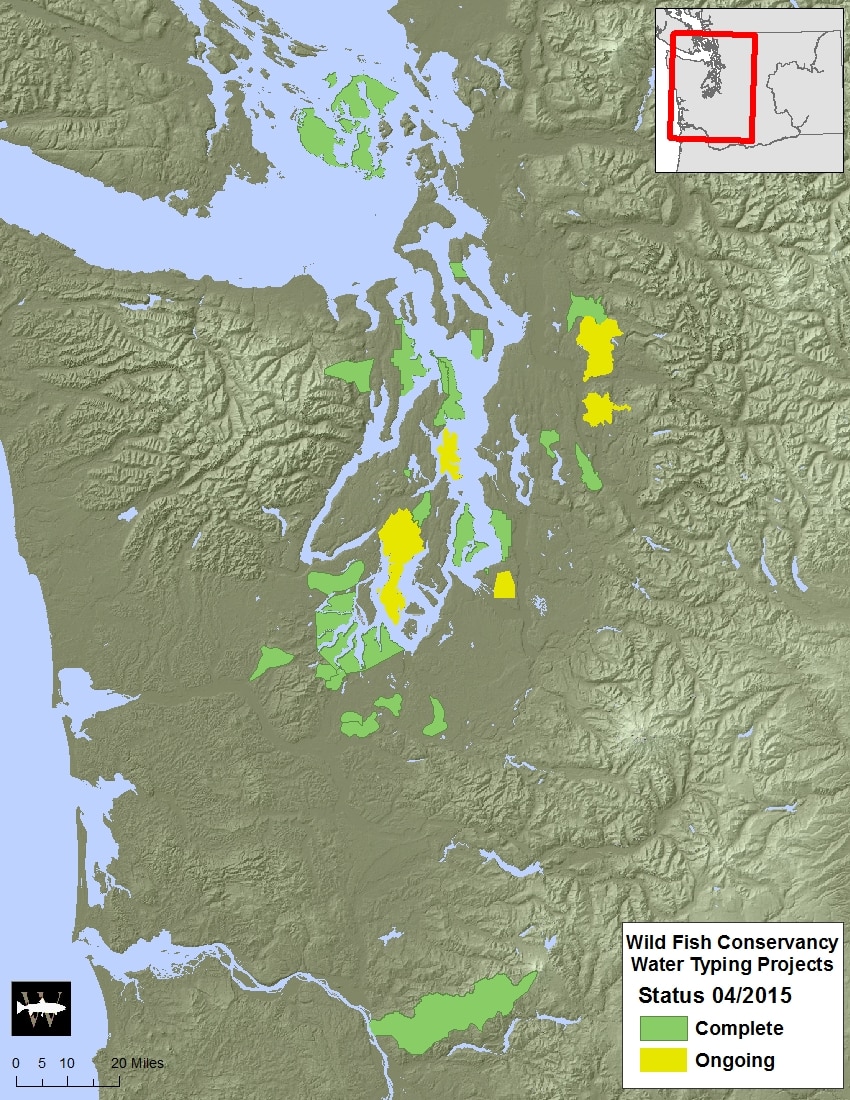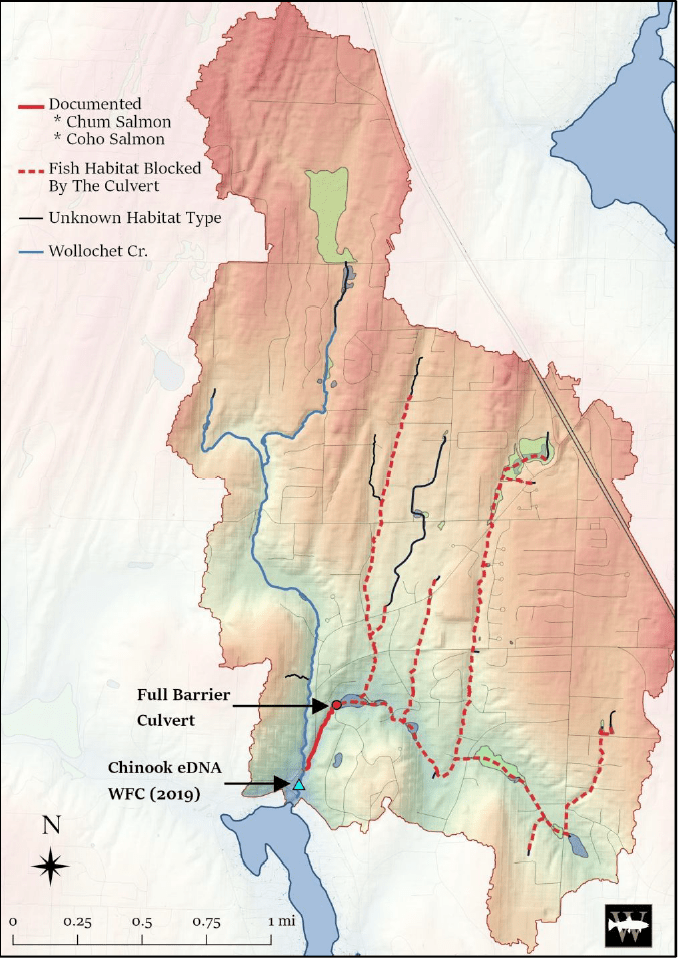

In cities and counties throughout Puget Sound, western Washington State, water type classification (such as “fish bearing” or “non-fish bearing”) directly affects the amount of protection that streamside buffers receive through local governance.
Too often, however, these streams do not receive the protection they should for a surprisingly simple reason: policy makers are relying on inaccurate maps.
Errors in Washington State water type maps result in the under-protection of 40-60% of the fish-bearing stream network. Over the 90 miles of streams in this study area, WFC found that 1.8 miles of those WDNR mapped channels did not exist, but that an additional 18.5 miles of stream channels did exist that were not on the official WDNR water type maps.
Using visual and electrofishing surveys by state-established protocols, Wild Fish Conservancy documented and corrected water type classifications using established state protocols in approximately 90 mi of streams that drain the Gig Harbor Peninsula – including four with Critical Habitat for Puget Sound Steelhead
Working with the West Sound Lead Entity Technical Advisory Group, WFC prioritized the five highest priority habitat restoration and protection projects encountered during the assessment.
Using GPS and GIS, WFC accurately mapped previously unmapped/incorrectly mapped water courses to ensure informed and responsible watershed management. The assessment results were submited to WDNR and uploaded into a web-based interactive GIS available to planners, landowners, and resource managers.
Using eDNA and field observations, WFC filled critical data gaps on ESA-listed fish species composition and distribution. In Garr Creek, one of the reaches within the study area, eDNA confirmed the presence of Chinook salmon bellow a barrier culvert. Replacing this culvert would extend habitat an additional 5.72 miles for these Chinook.
Location | Start Date |
|---|---|
Purdy, Crescent, North, McCormick, Goodnough, and Artondale Creeks, Gig Harbor, western Washington State | 12/08/2016 |
Project Type | Completion Date |
|---|---|
Water Typing, eDNA | 03/31/2020 |
Project Goals include:
1. Increase the likelihood that existing regulations will effectively protect critical areas in priority WRIA 15 watersheds.
2. Fill fundamental data gaps about fish species composition and distribution to inform future habitat restoration and protection efforts in priority WRIA 15 watersheds.
3. Identify, prioritize, and describe at least five habitat restoration and protection projects observed during the course of this assessment, and work with project sponsors to develop and implement identified projects in subsequent SRFB rounds.
Primary Habitats Impacted By Project: | Managing Agency/ Organization: |
|---|---|
Riparian Stream Channels | Wild Fish Conservancy |
Project Contact: | Budget or Project Cost: |
|---|---|
Jamie Glasgow | $195,000 |
Funding Sources: | Partners: |
|---|---|
Salmon Federal Projects, Washington State Grants | USFS Rocky Mountain Research Station, City of Gig Harbor, and Kitsap County |

Join our mailing list to recieve important updates on our work, the latest wild fish news, & opportunities to take action to support wild fish.
This site is protected by reCAPTCHA and the Google Privacy Policy and Terms of Service apply.
Wild Fish Conservancy is recognized as a 501(c)3 non-profit by the IRS